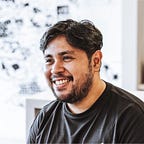Two ways to answer “Why?” and how they can change your perception
“Why?” can be a tricky question to answer. During my years as a lecturer, whenever I ask my students for their research rationales which is basically “why does anyone need your research?”, they most often curl up into a ball. It’s just not an easy question to answer. Up to this day, whenever I get asked this, whether at work or at home, I feel like an untrained monkey on stage.
But through years of asking Why and being asked Why, I’ve developed a way to answer the question. I call it the Why Compass. And it’s actually quite simple — too simple that I sometimes wonder why I even called it something. Oops, there it is again.
In a nutshell , the reason why I created the Why Compass is because I observed that answering the question is quite difficult. And so, the Why Compass was built so that I can have some sort of framework to use to make it easier to answer Why questions.
Did you see what I did there? Check out the italicized words.
The pointers of the Why Compass point to two opposite directions: to “Because”, and to “So That.” The two directions rest on opposite ends of the same line because although their directions are opposites, they should be logically aligned. Let me explain using a very important question.
“Why should I eat cake ?”
Looking back with Because
Answering Why with “because” makes us look back at scenarios that resulted to the current predicament. Because Because is a way to explain the Why through previous events. In short, it’s a cause-based justification.
A more comprehensive way to answer through this is by creating a problematique map. A problematique map is diagram that illustrates how different causes are also results of deeper things. It also shows how deep causes can be; and helps us get to the root cause. Let’s do a simple problematique map for the very important question above. Should I eat cake?
Yes, because… I want to because I deserve it because I need to re-energize because it makes me feel good and because I really don’t ask for anything else! Wow. Now cake is really about me just asking for something simple. Hey, I’m a simple guy. I like cake.
This direction moves backwards through the Behavior Change model. Let’s say we start with Action: I ate cake. Why? Because I wanted to — Intention. Why? Because I needed to — Decision-making. Why? Because I needed to re-energize and cake makes me feel good — Persuasion. Why? Because I don’t really ask for anything else — Awareness .
Looking forward with So That
So that moves opposite Because. It looks forward into the future. It answers Why not through causes but by looking at our intended effects. It’s an effect-based justification. So that does not look at reasons; instead it looks at intentions.
We can also use the problematique map to diagram the relationships of Whys. So, below is just that: a map of why the cake is eaten, through lens of So That.
Should I eat cake? Yes so that I am energized for the day; so that I stay motivated; so that I can stay happy.
This direction flows naturally forwards through the Behavior Change Model. I should eat cake— Awareness. Why? So that I’m energized — Persuasion. Why? So that I stay motivated — Intention. Why? To stay happy — Action.
Can you see the change in texture? Because looks backwards, while So That looks forwards. Because is reactive; while So That is proactive.
As I mentioned I think both ways to answer Why are okay. And while they point to opposite directions, they have an aligned logical flow. When put together in line looks like this:
So what now?
I like using this framework for various things. I use it to explain something to my family, to rationalize investments and “investments”, and to write strategies. Research rationales usually use the Because framework as they usually look at previous literature and available evidences to extrapolate needs. Writing Project Objectives and strategies usually slant towards So That as they attempt to illustrate opportunities and what-could-bes.
I hope this framework makes answering Why a little less difficult. ‘Till next time!
